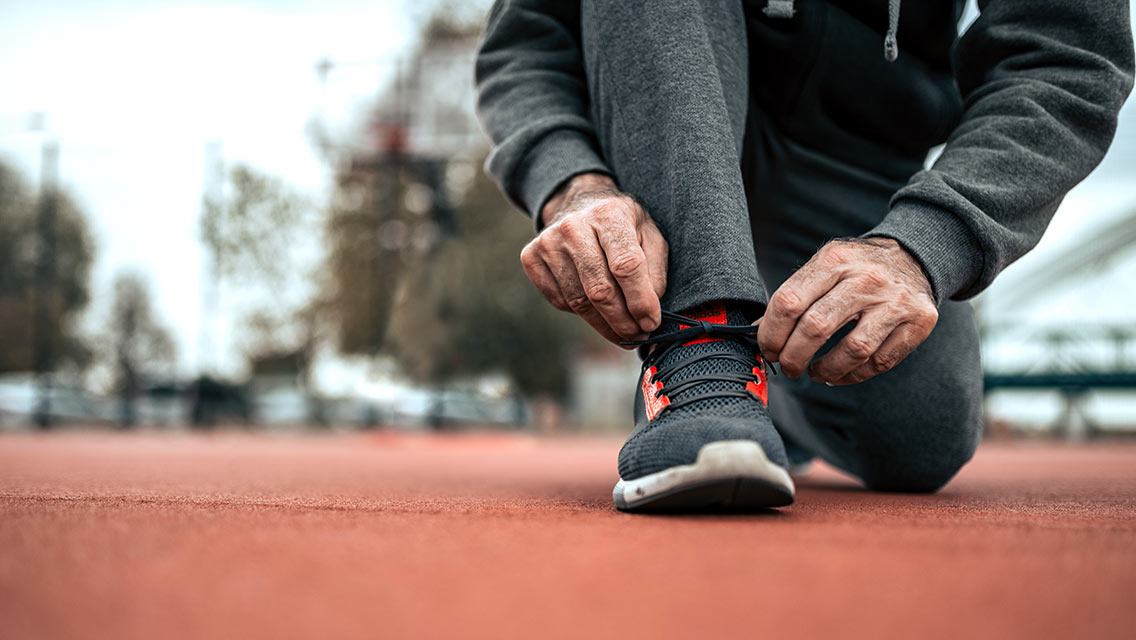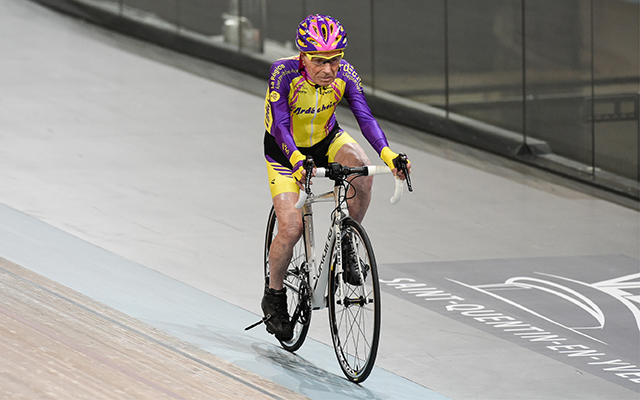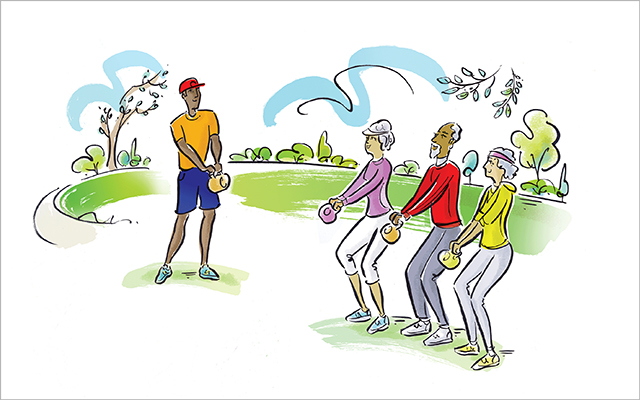There’s nothing like a season on a cross-country team to put a guy off running for the rest of his life. At least that was the conclusion I reached as a stumpy-legged seventh-grader whose primary race-day goal was to avoid being trampled by the herd of gazelles loping past me 20 yards from the starting line. A decade later, I still recalled the burning lungs and spent legs of those races as I watched the jogging craze of the early ’70s zip past me with similar ease. These days, the only time I’ll break into a trot is when my 4-year-old grandson goads me into a race to the next crack in the sidewalk.
So, I was intrigued the other day to learn about Ruby Ghadially’s journey from nonrunner at 57 to elite miler at 63 — and why late-blooming runners are regularly beating their veteran counterparts to the finish line.
Ghadially, MD, a dermatologist and researcher on aging at the University of California at San Francisco, wasn’t exactly rising from the couch when she set off on a mile run the day her youngest was accepted into college. But her preferred mode of exercise involved a bicycle; she hadn’t done any running in years.
“It was a pitiful run,” she tells Ian McMahan in the Washington Post. “Exactly a half a mile from my house to the golf course in the Presidio.” Exhausted, she jogged back home. She timed herself, though: “I know I ran a 14- or 15-minute mile.”
Six years later, Ghadially has quickened her pace significantly; her 6:09 mile is just 29 seconds off the world record for her age group. And Nancy Simmons, 61, her teammate on the San Francisco–based Impala Racing Team, set an age-group record at the 2019 USA Track and Field Championships before nabbing first-place honors last year at New York City’s 5th Avenue Mile and the USA Track and Field Cross Country Championships. Simmons laced up her running shoes only 10 years ago.
Then there’s Brian Pilcher, 64, a self-proclaimed couch potato who took up running in 2006 after 30 years of lounging around and now holds U.S. age-group records in the marathon, half-marathon, and 5K. “They say you can’t PR every time out, but I did,” he says.
These are not isolated cases, notes Amby Burfoot, 74, winner of the 1968 Boston Marathon who still races competitively. “The people that are beating us, I wouldn’t say they started yesterday, by any means, because it takes a number of years to get to your potential. But they are runners in many cases who were not stars — or even runners — when they were young.”
Fresher legs may be a contributing factor, though Burfoot argues that the thousands of miles he’s run over the years strengthens rather than erodes his cardiovascular and structural systems. Still, the toll those miles exact on the tendons, ligaments, and cartilage can put longtime runners at a disadvantage when competing against those harboring what University of Texas exercise science professor Hirofumi Tanaka, PhD, calls “orthopedic reserve.”
Aerobic capacity (VO2 max), lactate threshold, and running economy all play a role as well, Tanaka explains, but only VO2 max tends to decline over the years — and it can be improved.
Perhaps more pivotal is the difference in motivation between veteran runners and late bloomers. “I think the purpose of exercising actually changes,” Tanaka says. “In terms of recognitions on the podium, you really don’t experience that when you get older.”
That’s certainly the case for Ghadially, who admits she’s “running away from old age,” and Pilcher, who says he “always knew I could run fast, but I wanted to prove it.”
I’m not sure what my 61-year-old ego was trying to prove several years back, when I invited my teenage son to join me for a New Year’s Day 5K “fun run” in downtown Minneapolis. Swaddled in several layers and sporting a pair of work boots instead of sneakers — a nod to the 6-below race-day temperature — I embarked from the starting line in full stride only to find myself out of breath 50 yards later. This is why jogging was invented, I quickly recalled, and spent the next 30-some minutes trotting economically alongside my son (who occasionally ran backwards just to make a point) amid the surprisingly upbeat crowd.
With a mile or so to go, he dashed off at top speed while I plodded along until the finish line came into view. I could hear an excitable fellow with a microphone urging the racers on and found myself unconsciously picking up my pace. Twenty yards from the finish line, I broke into a full sprint. “HERE’S A GUY IN JEANS AND WORK BOOTS!” he announced with only a hint of sarcasm. I raised my arms victoriously as I broke the imaginary tape.
In some alternative universe, that would be a transformative moment: I would suddenly realize how much I missed running, begin a serious training regimen, and go on to outrace my peers at the Boston Marathon. But this is the real world, and if I never run another 5K it’ll be too soon. Every so often, though, I’ll zip past my grandson and beat him to that crack in the sidewalk, just to yank his chain a little. That’s when he tells me the finish line is still up ahead.





This Post Has 0 Comments